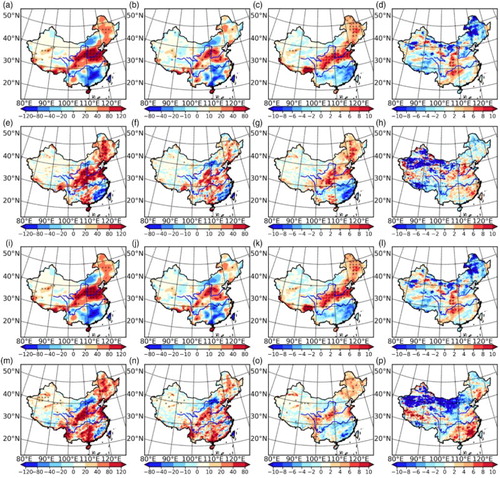Figures & data
Fig. 1 The WRF model domain and topography (m). The eight sub-regions used in the analysis are identified (1: western part of Northwest China; 2: eastern part of Northwest China; 3: North China; 4: Northeast China; 5: Tibetan Plateau; 6: Southwest China; 7: Yangtze River Valley (middle and lower); 8: South China (includes Hainan and Taiwan islands)).
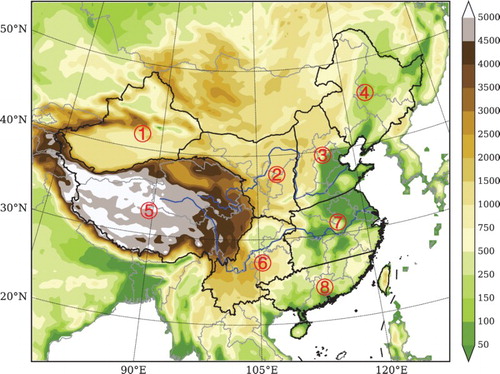
Table 1. Definitions and units of the 12 climate extreme indices used in this study (see http://www.climdex.org/indices.html).
Fig. 2 Spatial distribution of seasonal mean surface air temperature (°C) averaged during the 1996–2005 period as observed (OBS) and as simulated by CCSM4 and downscaled by WRF: (a) OBS (MAM), (b) CCSM4 (MAM), (c) WRF (MAM), (d) OBS (JJA), (e) CCSM4 (JJA), (f) WRF (JJA), (g) OBS (SON), (h) CCSM4 (SON), (i) WRF (SON), (j) OBS (DJF), (k) CCSM4 (DJF), and (l) WRF (DJF), where MAM is March, April, and May; JJA is June, July, and August; SON is September, October, and November; and DJF is December, January, and February.
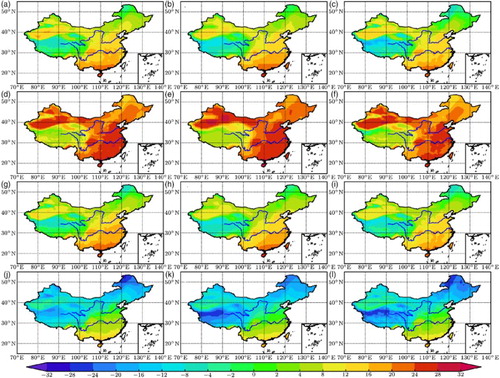
Fig. 3 Spatial distribution of seasonal mean surface air temperature bias (°C) averaged during the 1996–2005 period as simulated by CCSM4 and downscaled by WRF.

Fig. 4 Spatial distribution of seasonal mean daily precipitation (mm d−1) averaged during the 1996–2005 period as observed (OBS) and simulated by CCSM4 and downscaled by WRF: (a) OBS (MAM), (b) CCSM4 (MAM), (c) WRF (MAM), (d) OBS (JJA), (e) CCSM4 (JJA), (f) WRF (JJA), (g) OBS (SON), (h) CCSM4 (SON), (i) WRF (SON), (j) OBS (DJF), (k) CCSM4 (DJF), and (l) WRF (DJF).
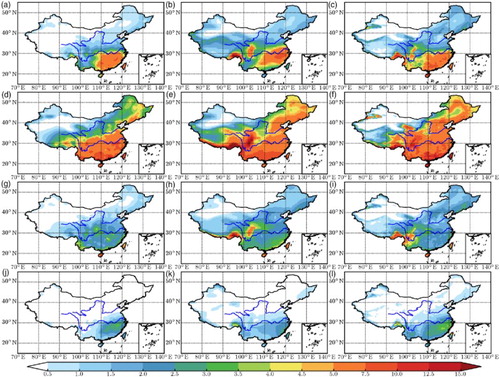
Fig. 5 Annual cycles of precipitation bias ratios (relative to observations) during the 1996–2005 period simulated by CCSM4 and downscaled by WRF averaged over the eight sub-regions in .
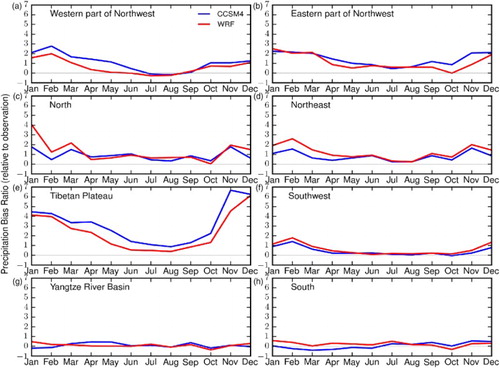
Table 2. Climatological seasonal spatial pattern correlation coefficients between observations and CCSM4, observations and WRF, CCSM4 and WRF for precipitation and surface air temperature during the 1996–2005 period.
Fig. 6 Spatial distribution of projected seasonal (MAM, JJA, SON, and DJF) mean surface air temperature differences (°C) (between the 2046–2055 and 1996–2005 averages) under RCP4.5 and RCP8.5 simulated by CCSM4 and downscaled by WRF.
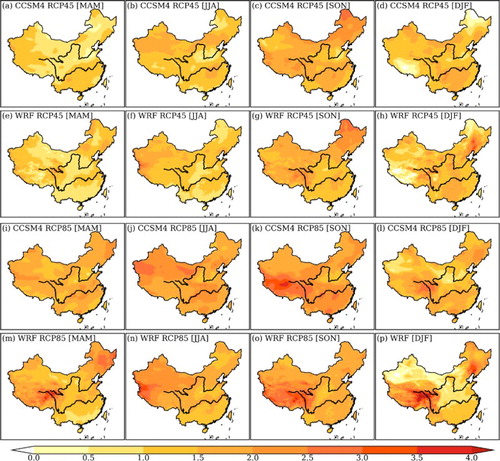
Fig. 7 Spatial distribution of projected seasonal (MAM, JJA, SON, and DJF) mean precipitation change (%) (differences between the averages during the 2046–2055 period and the 1996–2005 period relative to averages during the 1996–2005 period) under RCP4.5 and RCP8.5 simulated by CCSM4 and downscaled by WRF.
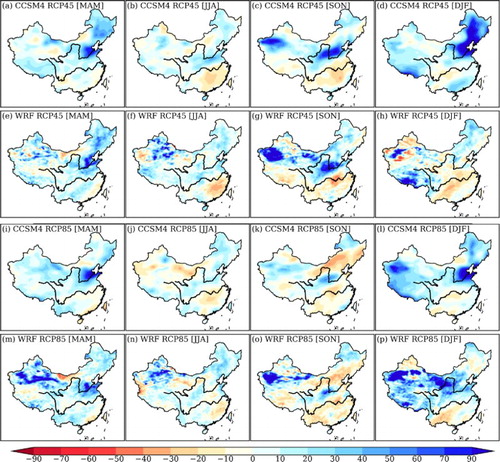
Fig. 8 Spatial distributions of future changes of annual (a), (e), (i), and (m) TX90p (%); (b), (f), (j), and (n) TX10p (%); (c), (g), (k), and (o) TN90p (%); and (d), (h), (l), and (p) TN10p (%) under the (a)–(h) RCP4.5 and (i)–(p) RCP8.5 emission scenarios for the 2046–2055 period relative to the historical run for the 1996–2005 period; crosses indicate changes significant at the p = 0.05 level based on a Student’s t-test. CCSM4 results are in the 1st (a)–(d) and 3rd (i)–(l) rows. WRF results are in the 2nd (e)–(h) and 4th (m)–(p) rows.
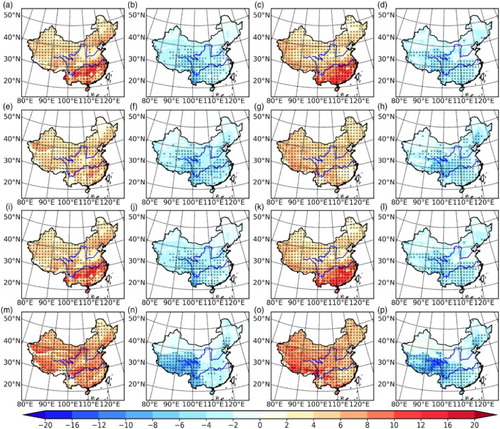
Fig. 9 Spatial distributions of future changes in annual (a), (e), (i), and (m) FD (days); (b), (f), (j), and (n) SU (days); (c), (g), (k), and (o) ID (days); and (d), (h), (l), and (p) TR (days) under the (a)–(h) RCP4.5 and (l)–(p) RCP8.5 emission scenarios for the 2046–2055 period relative to the historical run for the 1996–2005 period; crosses indicate changes significant at the p = 0.05 level based on a Student’s t-test. CCSM4 results are in the 1st (a)–(d) and 3rd (i)–(l) rows. WRF results are in the 2nd (e)–(h) and 4th (m)–(p) rows.
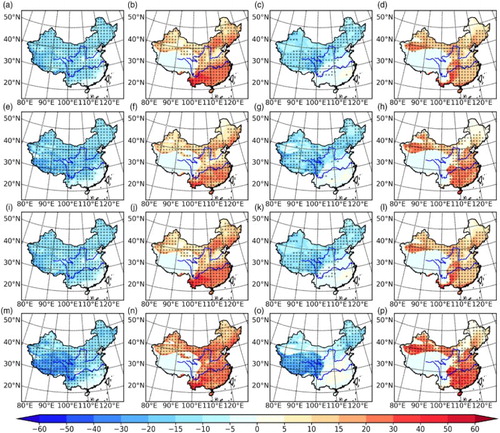
Table 3. Future changes in annual mean temperature climate extreme indices (Tx90p, Tx10p, Tn90p, and Tn10p) under RCP4.5 and RCP8.5 emission scenarios for the 2046–2055 period relative to the 1996–2005 period for eight regions of China (see ).
Table 4. Future changes in annual mean temperature climate extreme indices (FD, SU, ID, and TR) under RCP4.5 and RCP8.5 emission scenarios for the 2046–2055 period relative to the 1996–2005 period for eight regions of China (see ).
Fig. 10 Spatial distributions of future changes in annual (a), (e), (i), and (m) R95p (days); (b), (f), (j), and (n) Rx5day (mm); (c), (g), (k), and (o) R10mm (days); and (d), (h), (l), and (p) CDD (days) under the (a)–(h) RCP4.5 and (i)–(p) RCP8.5 emission scenarios for the 2046–2055 period relative to the historical run for the 1996–2005 period; crosses indicate changes significant at the p = 0.05 level based on a Student’s t-test. CCSM4 results are in the 1st (a)–(d) and 3rd (i)–(l) rows. WRF results are in 2nd (e)–(h) and 4th (m)–(p) rows.
